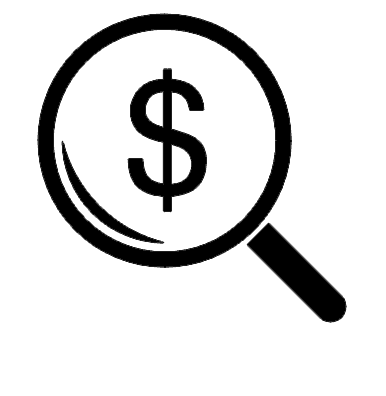Anything you need we are here to help



The customs clearance process can be complex and overwhelming for importers, especially if you’re navigating it for the very first time. The key to sailing through customs without any hiccups is understanding the basics, knowing how the process works, and knowing what you should expect every step of the way.
Customs clearance is the process of allowing goods to enter a foreign country after the payment of taxes and duties associated with those goods. It’s designed to protect critical items such as animals, plants, pharmaceutical products, and the like from entering countries without proper regulations and guidelines.
At its core, customs clearance is about transparency – making sure all stakeholders in international trade are properly informed about what needs to be done before an item can cross borders. Fortunately, it doesn't have to be as daunting as it sounds; by understanding the process and regulations fully, ensuring all paperwork is correct, and staying organized during the entire transaction, customs clearance can be a simple and straightforward process.
In this customs clearance checklist, we'll review the basics of the process, explore the benefits of preparing yourself in advance, and provide some helpful tips on how to make sure that your customs clearance experience goes as smoothly as possible.
Whether you're an experienced importer or new to the customs process, following these steps will help ensure the journey through customs is effortless and pain-free.
Every importer dreams of a hassle-free customs clearance process, and a smooth, stress-free experience is always the primary goal. If you don’t prepare in advance, however, it can be difficult to keep track of all requirements and procedures.
We’ve created this step-by-step checklist to help make your journey into the import world as seamless as possible, showing you exactly how to get organized and remain compliant so that you can clear customs quickly and effortlessly. Let’s jump in and explore the steps you’ll need to take to sail smoothly through customs.
Customs clearance is a highly complex and nuanced process, and can be difficult to navigate on your own. Errors in filing can result in massive delays, additional inspections, and even seizure of goods – all of which are extremely costly. To ensure a smooth process, importers should plan ahead and use the services of a licensed customs broker.
Experienced brokers can provide valuable advice and insight on the logistics of imports and exports, as well as help with needed documents, entry filing, and more. They can also assist in navigating issues that arise along the way, such as tariff classification and potential changes in import regulations.
Brokers are familiar with the ins and outs of customs processes and can offer critical guidance to ensure your shipments arrive on time and without any issues. Before engaging a customs broker, make sure to do research to find one that is reliable and has a strong track record of success, and review their broker fees to verify that they match your budget and expectations.
A commonly overlooked and unknown step in the customs clearance process is assigning power of attorney (POA). FreightMango and its customers have had a fair share of headaches dealing with this in the past, showing how important it is to get this step right from the very beginning.
The POA for international shipments will be tied directly to the customs broker chosen for a specific shipment. The broker will send the POA form and will need to be completed in its entirety and be submitted with all supporting documents, including EIN verification. Once the POA is filed it will be valid for all future shipments with that specific broker. However, a new POA will need to be completed anytime a new broker is used.
To begin the process, importers must first gather all relevant documents required for import customs clearance in the United States, such as purchase orders, packing slips, bills of lading, bills of entry, invoices, and certificates of origin. We’re going to walk through some of these essential import documents for customs clearance and explore why they’re relevant.
Your commercial invoice should include the full details of the shipment, including the buyer and seller’s name, address, and contact information; the product details; the quantity of the goods being shipped; the price per unit and the total value of the goods; and any applicable taxes or duties. It’s important to provide a clear and concise description of goods being shipped and to classify items according to the Harmonized System (HS) code. The invoice should indicate whether the shipment is for sale or gift purposes and if any additional documents are required for customs clearance.
The bill of lading and airway bill (BL/AWB) is an essential document in the customs clearance process that serves as a formal record of the goods being shipped and provides information regarding their weight, destination, and other pertinent details. It also serves as a receipt for both the shipper and the receiver, confirming the goods have been delivered and received. A bill of lading should be completed accurately and carefully, ensuring all the necessary information is included and the details are correct.
In some cases, a bill of lading may be used to secure a bank loan or provide assurance of payment from the buyer. As such, it is important to accurately register the details of each shipment and double-check the accuracy of the information.
A Certificate of Origin (CoO) is a formal legal document used to identify the origin of goods and ocean freight. It is issued by a government or accredited agency and indicates in which country the goods were produced or manufactured.
This document is essential when it comes to tariffs, regulations, and trade agreements and contains information such as the name and address of the producer, the type of goods being shipped, and the destination of the shipment.
When issuing a CoO, a seller must provide evidence that the goods originated in a specific country and comply with all applicable regulations. The CoO provides assurance to buyers that their purchase does not violate any foreign regulations and helps ensure importers comply with relevant laws relating to international trade.
To ensure goods are cleared for import and avoid potential issues, a comprehensive packing list must be created. This should include detailed information about each item, such as name, quantity, measurements, and photographs. The PL should also include appropriate codes for each item according to the HS code, as this is required for customs clearance.
Additionally, the invoice value of each item should be included, as this is required for customs duty calculations, along with an accurate description of the shipped goods to ensure they reach their destination without any problems or delays.
Some additional documents that may be required for importers to pass customs clearance are included in the list below; note that not all of these documents may be required for you specifically, depending on where, what, and how you’re importing goods.
Bill of Entry – The passport for cargo entering the country
Import License – Ticket to import goods without incurring any duty or penalty
Insurance Certificate – A safety net that covers importers in case of any damages to goods
Purchase Order or Letter of Credit – An agreement between buyers and sellers that outlines transaction details, helping secure payments
Industrial License – Ensures compliance with industry regulations
Registration cum Membership Certificate (RCMC) – A Registration cum Membership Certificate (RCMC) validates your credentials as an importer.
Test Report – Provides assurance on quality and safety standards.
Central Excise Document – Required for goods that produce dutiable excise items.
GATT/DGFT Declaration – Helps in getting relief from customs under certain conditions.
DEEC/DEPB/ECGC Documents for Duty Benefits – Enable availing of duty benefits.
Importers must be familiar with tariff classification codes in order to accurately rate the goods they are importing, as well as the applicable taxes and fees. Additionally, they need to understand the restrictions and requirements that may apply to certain goods, such as special labeling requirements or country of origin restrictions.
Customs brokers can assist with calculating duty taxes and fees on an importer’s behalf, but they must have accurate tariff classification codes to do so, and will not be liable for misclassification due to shipper or importer inaccuracies. Correctly identifying each tariff code results in more accurate tax calculations and smoother navigation of customs clearance regulations.
Start by researching national tariff codes for goods that need to be imported via ocean freight shipping and ocean freight companies, and any custom clearance charges for import shipment. Gather all necessary information from government and international regulatory bodies, and make sure you have an in-depth understanding of the classification system.
Make sure to consider any local or regional regulations, as well as any restrictions or prohibitions. You will also need to research any potential exemptions or lower rates of duty for certain goods in order to ensure you’re not paying too much for customs clearance.
Duty rates for imported goods may vary depending on the country of origin, the type of product, and its purpose. To calculate duty rates, importers must first identify the Harmonized Tariff System (HTS) code that corresponds to their product. The HTS code can be used to look up the applicable duty rate in tables provided by the government.
Additionally, you should check for special trade agreements or preferential tariffs that may lower duties on certain items and be aware that there may be changes to duty rates over time as countries update their tariffs periodically.
When dealing with customs clearance, it’s important to understand all applicable tax rates. Depending on where the goods are coming from, tax rates may vary. It’s important to understand that in addition to taxes imposed by governments, some companies may also have their own fees associated with clearance. Knowing this number ahead of time ensures you’re prepared and helps you sail smoothly through the process.
The next step is to prepare payment. The broker will help calculate customs duties, taxes, and other fees, and facilitate payment to the appropriate parties at each step. Here are things to keep in mind when preparing payment for customs clearance.
When estimating the cost of customs clearance for a shipment, several factors must be considered. The type of goods being imported, the country of origin and the final destination, the volume of the shipment, and any special handling or service requirements must all be taken into account. Taxes and duties, additional fees, and any applicable tariffs must be considered.
The type of payment option chosen will depend upon the size and nature of the items being shipped. For small shipments, credit cards and debit cards are typically the most common payment option. However, for larger shipments, cash on delivery and bank transfers may be more appropriate. By researching the different payment options available and comparing the pros and cons of each, you can make an informed decision.
If you’re brokering a shipment of imported goods and there are unpaid fees or customs clearance charges, don’t forget to contact the client to collect payment before proceeding.
Before your shipment can be cleared for import, certain documents will need to be submitted to make the process go smoothly. Depending on the commodity or goods being imported, you'll need to have the following documents prepared and submitted to the customs office: commercial invoice, bill of lading, packing list, shipper's export declaration, certificates of origin, and any other relevant documents as required by the destination country.
You'll also need to file a customs entry with the necessary information, including value and tariff classification. It's important to ensure all required documents are in order prior to submission so that the clearance process is hassle-free and your shipment reaches its destination on time.
Keep in mind there are several critical deadlines to consider for customs filing:
AMS & ISF 10+2 must be filled out and submitted at least 24 hours before sailing.
All other documents must be submitted prior to arrival at the destination port, or goods could be held at customs and accrue substantial demurrage charges.
Here is a convenient checklist to follow for customs clearance document submission:
Submit documents to your broker. The documents required may vary depending on the type of product being shipped but typically include a commercial invoice, packing list, bill of lading, and any other documents required by local regulations.
Ensure documents are accurate and double-check all information. Verify all documents are up to date, complete, and accurate in order to avoid delays and additional fees.
Monitor the clearance process. Monitor the entire process and ensure that goods are cleared quickly and without issues. Pay attention to the details and make sure that everything is done correctly in order to avoid delays, fines, or other problems.
To obtain final clearance from customs, an importer must have completed all required paperwork, provided the proper documents, and paid all necessary fees. Once this process has been completed, you’re in the final stretch!
Your clearance is obtained by presenting the necessary documents to the CBP officers at the port of entry. Some documents required include a commercial invoice, a packing list, and a bill of lading, and receipt of the final clearance notice signals that all necessary paperwork has been processed and accepted, and the shipment may now be released into the U.S.
Once everything is complete, you can collect your goods from the port of entry and carry them into the country to their next destination.
It’s clear that importers need to prepare ahead of time in order to clear customs successfully after importing goods through ocean freight services or ocean freight carriers. This includes researching reliable customs brokers, understanding the details of their shipment, preparing the required documentation, and doing due diligence on shipping lines and origination vendors.
In this comprehensive customs clearance checklist, we discussed how an importer should gather required documents, calculate duties and taxes, prepare payment, assign a power of attorney, use a licensed customs broker, submit required documentation, and obtain final clearance to import their goods successfully.
By taking the time to prepare for customs clearance properly, importers can ensure their goods arrive on time and avoid unnecessary costs and delays. Furthermore, with the right preparation, every importer can take advantage of any special exemptions or incentives offered by the country of arrival, thus increasing their profits and making their international trade more successful.
FreightMango is the ideal freight partner for anyone looking for customs clearance services. With a wealth of experience and knowledge in the industry, FreightMango offers comprehensive clearance services and a digital freight marketplace that make it easy to import or export goods from one country to another.
Their team is comprised of professionals who understand the importance of seamless customs clearance, and they are dedicated to helping customers achieve their specific goals with as little stress and hassle as possible. They work closely with customs authorities to ensure that all shipments comply with applicable regulations and laws and offer a range of additional services, such as document preparation, cargo tracking, and post-clearance support.
We don't lock customers into long-term contracts, giving them the freedom to switch carriers when it makes sense. This lets us utilize NVOCC contracts without being committed to them ourselves and allows us to take advantage of spot market rates whenever it makes financial sense. Our customers benefit from a more flexible system that always seeks the most competitive prices. With Freightmango, you never have to worry about getting locked into a contract that isn't in your best interests.
Customs can be one of the biggest barriers to success for small and mid-size shippers. Booking with carriers directly can be a time-consuming and frustrating process, as the carriers don't always provide all the necessary information needed to make sure the shipments are compliant with customs requirements.
With FreightMango, shippers can access accurate and up-to-date customs information quickly and easily on an online freight marketplace and freight forwarder marketplace, allowing them to avoid unnecessary delays and fees. FreightMango also provides its users with speed, helping them to prepare for customs quickly and easily so that their shipments arrive on time and without any complications. When it comes to freight shipping marketplace selection and choosing the right freight forwarding marketplace for you, you can't go wrong with FreightMango.
If you’re ready to speed through customs faster than ever and make customs clearance preparation a breeze, contact FreightMango today to learn more about how we can help your organization.

